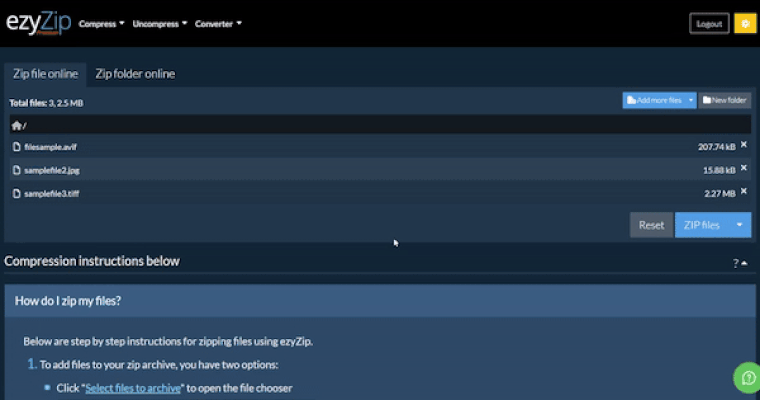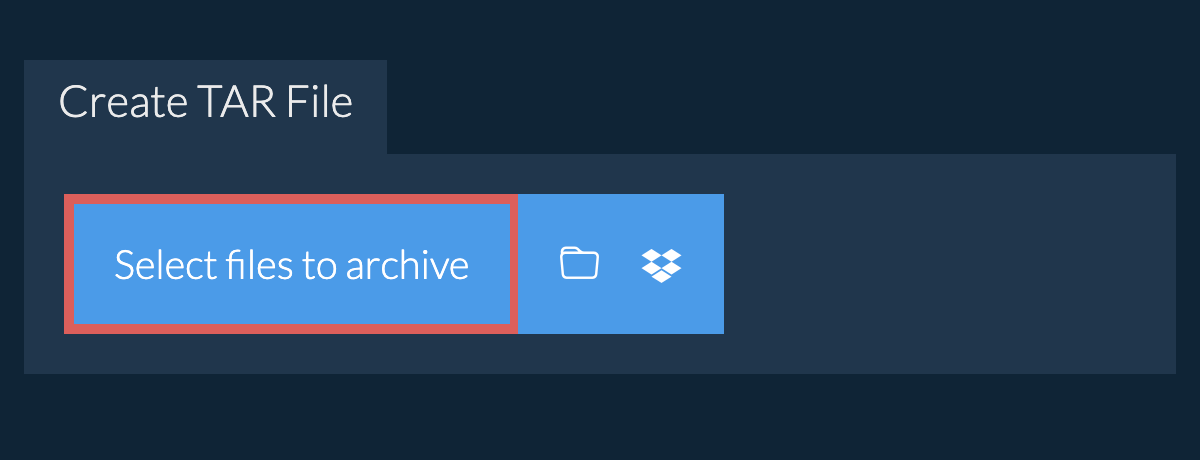Compression instructions below

Go Ad-Free with ezyZip Pro!
Enjoy all your favorite features, like seamless compression, conversion, and easy extraction, without the distraction of ads. Upgrade now for a faster, frustration-free experience!
Sign up!Video Instructions
How do I create tar file?
- To add files to your tar archive, you have two options:
- Click "Select files to archive" to open the file chooser

- Drag and drop files and folders directly onto ezyZip
- (Optional) Set the desired compression level by clicking the down arrow next to "Create TAR File" button.
- Click "Create TAR File". It will start compressing the files.

- Click "Save TAR File" to save the archive to selected destination folder.

How do I create tar archive from a folder?

How do I convert Dropbox files to tar?
- Click on the Dropbox logo () in the file selector button.

- The Dropbox file chooser will appear. You will need to authorise access to ezyZip the first time.
- Once you have selected the file(s), they will appear in the listing. Follow the instructions above to compress the files.
- To save the resulting TAR file to Dropbox, click on "Dropbox" dropdown under the "Save TAR File" button. This will require authorisation the first time you run it.
The file will be stored in /Apps/ezyZip folder.
What operating system and browser does ezyZip support?
We are continuously updating the system, so ensure you are using the latest version of one of the popular browsers or their variants. (e.g. Chrome, Firefox, Safari, Opera).
Please let us know via the feedback form if you have any issues.
What is a tar file?
A TAR file (short for Tape Archive) is a widely-used archive format in Unix and Linux environments. Unlike other formats, TAR itself does not compress the files; instead, it simply bundles multiple files and directories into a single archive file. This makes it a useful tool for combining many files into one, preserving file system information such as directory structures, timestamps, and permissions.
Originally designed for tape backups, TAR files are now often used in conjunction with compression utilities like GZIP or BZIP2 to create compressed archives such as TAR.GZ or TAR.BZ2. The simplicity and flexibility of TAR make it an essential format for archiving and distributing software and data on Unix-based systems.
